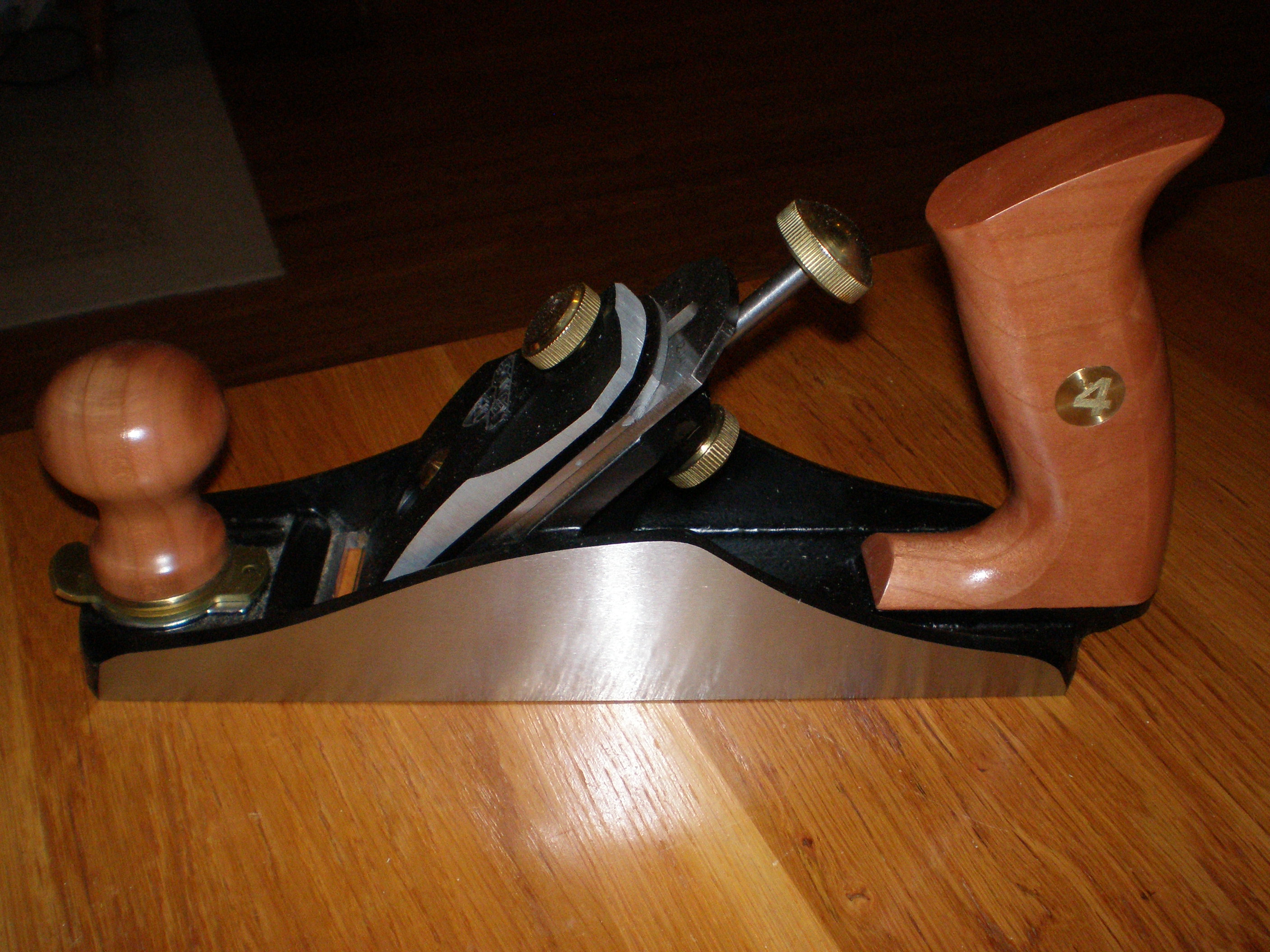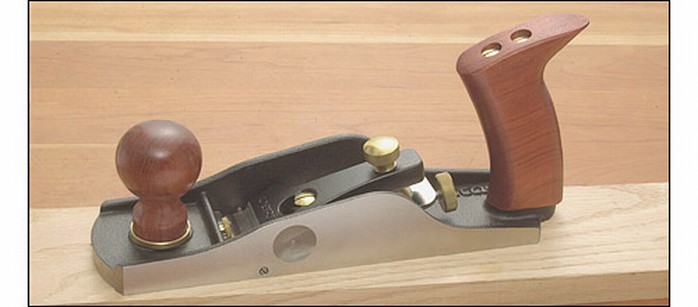I decided to sharpen another of dad's old planes and have ago. It works fine though I struggle to set it properly, practice I guess. Can anyone advise what size it is based on this photo? (measurement's in inches.)

Also, the handle just falls off - should I just put some wood glue in to hold it?
Thanks
Chris

Also, the handle just falls off - should I just put some wood glue in to hold it?
Thanks
Chris







